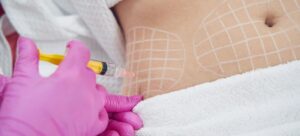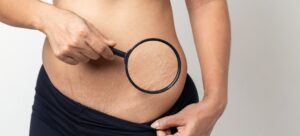Introduction
In recent years, the pursuit of youthful, smooth, and radiant skin has spurred significant advances in cosmetic dermatology. Among the most common skin concerns are cellulite and stretch marks—conditions that, while not harmful to overall health, can impact self-confidence and the appearance of one’s skin. Increasingly, individuals are seeking solutions that offer effective results without the risks and downtime associated with invasive procedures. This article aims to serve as a comprehensive guide to the innovative non-invasive treatments available for reducing cellulite and stretch marks, drawing on the latest scientific research and clinical practices.
In Part 1, we will explore the fundamental concepts behind cellulite and stretch marks, understand the biological mechanisms at play, and discuss why non-invasive treatments are becoming the preferred choice for many. We will provide an overview of the various conditions, their underlying causes, and the advantages of non-invasive procedures. In Part 2, we will delve into specific treatment modalities—including laser therapy, radiofrequency, ultrasound, microneedling, and emerging combination therapies—and offer practical guidance for selecting the right treatment based on individual needs.
By understanding the science behind these skin conditions and the benefits of non-invasive approaches, you will be better equipped to make informed decisions about your skincare regimen and aesthetic treatments.
Understanding the Conditions
What is Cellulite?
Cellulite is commonly described as a dimpled, lumpy appearance of the skin that most frequently occurs on the thighs, buttocks, and abdomen. It is caused by the interaction between fat deposits and the fibrous connective tissue that anchors the skin to underlying structures. When fat cells expand, they can push through these connective tissues, creating the characteristic “orange peel” texture.
Key Points:
- Appearance: Initially appears as red or purple streaks, eventually fading to a white or silvery tone.
- Mechanism: Involves the expansion of fat cells and the weakening or stiffening of connective tissue.
- Prevalence: Affects individuals of various body types, though it is more common in women due to hormonal factors and differences in skin structure.
What are Stretch Marks?
Stretch marks, medically known as striae, are linear scars that form when the skin stretches rapidly. They are most often associated with periods of rapid growth, such as during puberty, pregnancy, or significant weight gain. The skin’s collagen and elastin fibers can tear under the strain, leading to the formation of these marks.
Key Points:
- Appearance: Typically start as reddish or purplish lines and gradually fade to white or silver.
- Mechanism: Result from the disruption of collagen and elastin fibers in the dermis.
- Contributing Factors: Hormonal changes, genetic predisposition, and rapid changes in body size.
Factors Influencing Skin Conditions
Understanding the underlying factors that contribute to the formation of cellulite and stretch marks is crucial for developing effective treatment strategies. These conditions are multifactorial, meaning that several biological, hormonal, and environmental elements interact to produce the final effect.
Biological and Hormonal Factors
- Genetics:
Genetic predisposition plays a key role in both cellulite and stretch mark development. Some individuals are naturally more prone to developing these conditions due to inherited skin characteristics and fat distribution patterns. - Hormones:
Hormonal fluctuations, particularly the presence of estrogen, can significantly affect skin structure and fat deposition. This is why cellulite is more prevalent in women and why stretch marks often occur during hormonal changes such as puberty, pregnancy, and menopause. - Aging:
As skin ages, it loses collagen and elastin—proteins critical for maintaining firmness and elasticity. The natural aging process makes the skin more susceptible to the physical changes that cause cellulite and stretch marks.
Lifestyle and Environmental Influences
- Diet and Nutrition:
A diet high in processed foods and sugars can lead to inflammation and reduced collagen production, worsening skin conditions. Conversely, a nutrient-rich diet supports skin health and resilience. - Hydration:
Adequate water intake is essential for maintaining skin elasticity. Dehydrated skin is more prone to developing fine lines, cellulite, and stretch marks. - Physical Activity:
Regular exercise improves circulation, supports muscle tone, and helps regulate body fat, all of which contribute to a smoother skin appearance. However, rapid weight fluctuations due to exercise or other factors can also stress the skin. - Environmental Stressors:
Exposure to pollutants, UV radiation, and other environmental factors can damage the skin over time, compromising its structural integrity and exacerbating both cellulite and stretch marks.
The Advantages of Non-Invasive Treatments
Why Choose Non-Invasive Approaches?
Non-invasive treatments have become increasingly popular because they offer several advantages over more invasive surgical procedures. These methods are designed to work with the body’s natural healing processes while minimizing risks, downtime, and discomfort.
Key Advantages:
- Safety:
Non-invasive treatments reduce the risk of complications, infections, and scarring that can occur with surgical procedures. - Minimal Downtime:
Most non-invasive treatments require little to no recovery time, allowing individuals to resume their daily activities almost immediately. - Cost-Effectiveness:
Although some advanced treatments can be expensive, they are generally less costly than surgical options and involve fewer risks. - Holistic Integration:
These treatments can be combined with daily skincare routines and lifestyle modifications to create a comprehensive approach to skin health.
The Role of Evidence-Based Practices
Advances in dermatological research have led to a better understanding of skin biology and the mechanisms underlying cellulite and stretch marks. This scientific progress has paved the way for non-invasive treatments that are supported by clinical evidence. When choosing a treatment plan, it is crucial to rely on approaches that are validated by research and tailored to an individual’s specific needs.
- Clinical Trials and Studies:
Many non-invasive treatments, such as laser therapy and radiofrequency, have undergone rigorous testing and have demonstrated efficacy in improving skin texture and reducing the appearance of imperfections. - Personalized Care:
Modern treatment protocols often involve an initial consultation with a dermatologist or aesthetic specialist, ensuring that the chosen method aligns with your skin type, condition, and personal goals.
Emerging Non-Invasive Treatment Modalities (Preview)
In Part 2, we will explore several innovative non-invasive treatment modalities in depth, including:
- Laser Therapy:
Understanding how different types of lasers can stimulate collagen production and improve skin appearance. - Radiofrequency and Ultrasound:
An overview of energy-based treatments that use heat to remodel the skin’s collagen structure. - Microneedling:
How microneedling, especially when combined with platelet-rich plasma (PRP), can trigger the skin’s natural repair processes. - Combination Approaches:
The potential benefits of integrating multiple treatment modalities for synergistic effects.
Conclusion of Part 1
In this first part of our comprehensive guide on innovative non-invasive treatments for reducing cellulite and stretch marks, we have laid the groundwork by defining these common skin conditions and examining the factors that contribute to their development. We have also discussed the inherent advantages of non-invasive approaches, highlighting their safety, minimal downtime, and the evidence-based practices that support their use.
Innovative Non-Invasive Treatments: A Comprehensive Guide to Reducing Cellulite and Stretch Marks
Emerging Non-Invasive Treatment Modalities
Building on the foundational understanding and advantages of non-invasive treatments discussed in Part 1, we now delve into the innovative treatment modalities that are reshaping the landscape of cellulite and stretch mark reduction. This section provides an in-depth look at several cutting-edge procedures that work by stimulating the skin’s natural repair processes, enhancing collagen production, and improving overall skin texture—all without the need for surgery.
Laser Therapy
Laser technology has advanced considerably over the past decade, offering new possibilities for skin rejuvenation and remodeling.
How Laser Therapy Works
- Mechanism of Action:
Laser treatments deliver concentrated beams of light to the targeted area, which penetrates the skin and stimulates collagen remodeling. The controlled thermal injury promotes the natural healing process, leading to the formation of new collagen fibers and improved skin elasticity. - Types of Laser Treatments:
- Fractional Laser Resurfacing:
This technique uses lasers to treat microscopic zones of the skin, leaving surrounding tissue intact to promote rapid healing. It is particularly effective at smoothing out the texture of the skin and reducing the appearance of stretch marks. - Pulsed Dye Lasers (PDL):
PDL targets blood vessels and can reduce redness and inflammation. It is useful in treating the early, reddish stages of stretch marks and can also help improve skin tone in areas affected by cellulite.
- Fractional Laser Resurfacing:
Benefits and Considerations
- Benefits:
Laser therapy is generally well-tolerated, with minimal downtime and significant improvements in skin texture. It can address both superficial and deeper skin layers, making it versatile for treating different severities of cellulite and stretch marks. - Considerations:
Multiple sessions are often required to achieve optimal results, and the effectiveness can vary depending on skin type, the severity of the condition, and individual healing responses. It is also essential to protect the skin from sun exposure before and after treatment to avoid complications.
Radiofrequency (RF) and Ultrasound Therapy
Energy-based treatments such as radiofrequency and ultrasound are widely recognized for their ability to tighten the skin and stimulate collagen production.
Radiofrequency (RF) Treatments
- Mechanism of Action:
RF devices use radio waves to generate heat within the deeper layers of the skin. This heat stimulates the production of collagen and elastin fibers, leading to firmer, more resilient skin. - Applications:
RF treatments are effective for reducing the appearance of cellulite by smoothing out the underlying fat deposits and tightening the skin. They are also beneficial in minimizing stretch marks by reinforcing the dermal matrix.
Ultrasound Therapy
- Mechanism of Action:
Ultrasound energy, particularly in the form of High-Intensity Focused Ultrasound (HIFU), penetrates the skin to target deeper tissues. The focused energy induces thermal effects that encourage collagen remodeling and fat reduction. - Benefits:
Ultrasound treatments are non-invasive and can improve skin texture, firmness, and overall appearance with little to no downtime. They are especially useful for areas where cellulite is pronounced and where traditional methods may have limited impact.
Combined Modalities
- Synergistic Effects:
Many practitioners are now combining RF and ultrasound treatments to leverage the strengths of both modalities. This combination can lead to enhanced collagen production, better fat reduction, and a more uniform skin tone. - Personalized Protocols:
Tailoring the treatment plan to an individual’s specific skin condition and goals often yields the best results, making it possible to address both cellulite and stretch marks concurrently.
Microneedling (With or Without PRP)
Microneedling has emerged as a popular technique in skin rejuvenation, particularly when combined with platelet-rich plasma (PRP).
How Microneedling Works
- Mechanism:
Microneedling involves the use of a device equipped with fine needles to create controlled micro-injuries in the skin. These tiny punctures trigger the body’s natural wound healing response, stimulating collagen and elastin production. - Benefits:
This process helps to improve the overall texture of the skin and can significantly reduce the appearance of both cellulite and stretch marks by promoting skin remodeling and tightening.
Enhancing Microneedling with PRP
- PRP Overview:
Platelet-rich plasma (PRP) is derived from your own blood and contains a high concentration of growth factors. When applied after microneedling, PRP can enhance the healing process and further stimulate collagen production. - Clinical Outcomes:
Studies have shown that microneedling combined with PRP results in improved skin texture and a reduction in the depth and visibility of stretch marks. The combination is minimally invasive, with relatively short recovery times.
Other Emerging Modalities and Combination Approaches
Cryotherapy
- Application:
Cryotherapy involves the application of cold temperatures to the skin to reduce inflammation and tighten skin fibers. Although more commonly used for other dermatological conditions, it is showing promise as an adjunct treatment for cellulite reduction. - Mechanism:
The cold temperature can improve circulation and reduce local swelling, creating a temporary tightening effect that may enhance the overall appearance of the skin.
Combination Treatments
- Multimodal Approaches:
The future of non-invasive skin treatments may lie in combining several modalities to achieve synergistic effects. For instance, a treatment plan might integrate laser therapy, microneedling, and RF therapy to simultaneously target multiple aspects of skin remodeling. - Tailored Regimens:
Customized treatment plans based on individual skin assessments and diagnostic data can maximize efficacy. Combining treatments allows practitioners to address both superficial and deep-seated skin concerns, resulting in more uniform improvements.
Practical Considerations for Treatment Selection
Choosing the right non-invasive treatment strategy depends on several factors that are unique to each individual. A personalized approach, often guided by professional consultations, ensures that the selected treatment modality addresses your specific skin type and condition.
Factors Influencing Treatment Choice
- Skin Type and Condition:
Different treatments may work better for certain skin types. For example, laser therapy might be more effective for individuals with lighter skin tones, while RF or ultrasound might be better suited for deeper skin remodeling in darker skin types. - Severity and Location:
The extent and location of cellulite and stretch marks will dictate the most appropriate treatment. Areas with more pronounced issues may require a combination of therapies. - Treatment Goals:
Setting realistic expectations is crucial. While non-invasive treatments can significantly improve the appearance of the skin, they may not completely eliminate cellulite or stretch marks. A clear understanding of your desired outcomes will help in selecting the most suitable approach. - Professional Assessment:
Consultation with a dermatologist or aesthetic specialist is essential. These experts can provide insights into the underlying causes of your skin issues and recommend a treatment plan that combines several modalities for the best possible results.
Integrating Treatments with Daily Skincare
Non-invasive treatments are most effective when integrated with a robust daily skincare routine. Post-treatment care is vital to sustaining the benefits of any procedure.
- Post-Treatment Skincare:
Following professional treatments, it is important to maintain a gentle skincare regimen that includes hydrating and repairing products. Ingredients like hyaluronic acid, antioxidants, and soothing agents can support the skin’s recovery and enhance the treatment’s results. - Sun Protection:
After procedures like laser therapy or microneedling, the skin becomes more sensitive to sunlight. Strict sun protection measures (using broad-spectrum sunscreens and avoiding direct sun exposure) are necessary to prevent damage and maintain results. - Lifestyle Adjustments:
Complement your treatment regimen with healthy lifestyle practices, including a balanced diet, regular exercise, and stress management, to support overall skin health and optimize treatment outcomes.
Expert Recommendations and Future Directions
As the field of non-invasive dermatology continues to evolve, expert insights and ongoing research provide valuable guidance for both practitioners and consumers.
Insights from Dermatologists and Aesthetic Specialists
- Personalized Treatment Protocols:
Experts emphasize the importance of customizing treatment plans based on individual skin assessments. A tailored approach that considers genetic predisposition, skin type, and lifestyle factors is key to achieving sustainable improvements. - Combination Therapies:
Many specialists advocate for the use of combination therapies to address the multifaceted nature of cellulite and stretch marks. For example, integrating microneedling with PRP and RF treatments can provide synergistic benefits that improve skin texture more effectively than any single treatment alone. - Ongoing Research:
Continuous advancements in imaging, diagnostics, and material sciences are expected to further refine non-invasive treatment modalities. Staying informed about the latest developments is essential for anyone considering these treatments.
Future Trends in Non-Invasive Treatments
- Personalized Medicine:
The future of skin treatments lies in personalized medicine, where treatments are tailored to an individual’s genetic makeup and specific skin characteristics. This approach promises to maximize treatment efficacy while minimizing side effects. - Integration of Smart Technologies:
Emerging technologies such as wearable skin monitors and AI-driven diagnostic tools will enable real-time assessments and adjustments to treatment protocols. These innovations could further optimize non-invasive therapies and provide ongoing feedback to both patients and clinicians. - Holistic Approaches:
The trend toward holistic skincare, which combines professional treatments with comprehensive lifestyle changes, is set to gain even more traction. This integrated approach not only addresses the visible signs of skin aging but also improves overall skin health through nutrition, exercise, and stress management.
Conclusion
In Part 2 of our comprehensive guide on innovative non-invasive treatments, we have explored a range of advanced treatment modalities that are shaping the future of skin rejuvenation. From laser therapy and radiofrequency to microneedling and combination treatments, these approaches offer promising, evidence-based solutions for reducing the appearance of cellulite and stretch marks.
We discussed the practical considerations involved in selecting the right treatment, emphasizing the importance of personalized care and integration with daily skincare routines. Additionally, expert insights and future trends highlight the dynamic nature of this field, offering hope for even more effective treatments in the years to come.
Recap of Key Points
- Innovative Modalities:
We examined various non-invasive treatments, including laser therapy, radiofrequency, ultrasound, and microneedling, each targeting different aspects of skin remodeling and collagen production. - Practical Considerations:
Factors such as skin type, severity of the condition, and treatment goals are critical in determining the best approach for each individual. Professional assessments and personalized treatment plans are essential. - Integration with Daily Skincare:
Post-treatment care, including hydration, sun protection, and supportive skincare routines, is vital to sustaining improvements and enhancing overall skin health. - Expert Insights and Future Directions:
Emerging trends in personalized medicine and smart technologies promise to further refine these treatments, making them more effective and tailored to individual needs.
Final Thoughts
The journey toward achieving radiant, youthful skin is multifaceted and requires a comprehensive approach. By embracing innovative non-invasive treatments alongside a solid daily skincare routine and healthy lifestyle habits, you can significantly reduce the appearance of cellulite and stretch marks while promoting long-term skin health.
We hope this guide has provided you with valuable insights and practical strategies to help you navigate the evolving world of non-invasive skin treatments. Remember, the key to success lies in personalized care—consulting with professionals, staying informed about the latest research, and integrating a holistic approach into your routine.
Thank you for joining us on this journey to uncover innovative ways to rejuvenate your skin. We invite you to explore these treatment options further and to share your experiences and questions with our community. Together, we can achieve healthier, more radiant skin that reflects both inner vitality and outer beauty.




